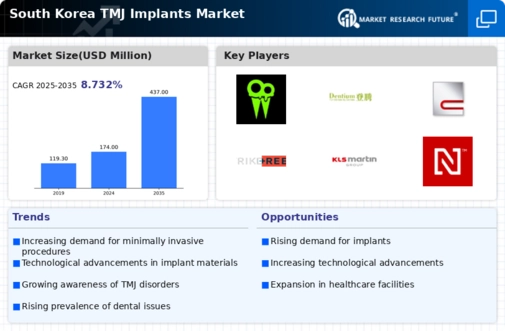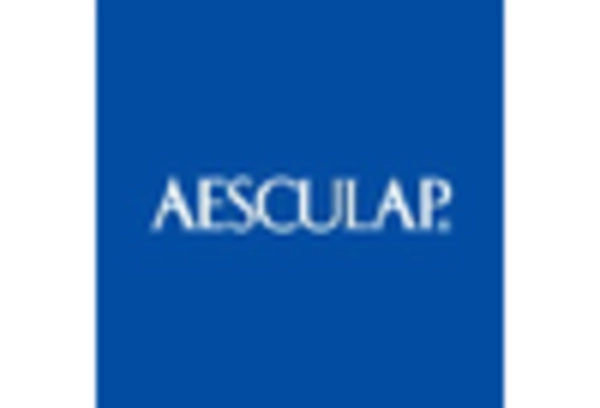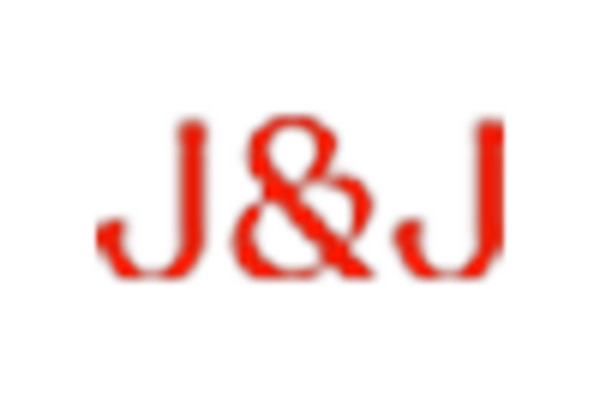Growing Cosmetic Surgery Trends
The rising popularity of cosmetic procedures in South Korea is influencing the tmj implants market. Many individuals are increasingly seeking surgical options not only for functional improvements but also for aesthetic enhancements. TMJ implants can help correct jaw alignment and improve facial symmetry, appealing to those interested in cosmetic surgery. This trend is particularly pronounced among younger demographics, who are more open to surgical interventions. As the cosmetic surgery market continues to flourish, the tmj implants market may experience a corresponding increase in demand, reflecting changing societal attitudes towards beauty and health.
Rising Incidence of TMJ Disorders
The increasing prevalence of temporomandibular joint (TMJ) disorders in South Korea is a primary driver for the tmj implants market. Recent studies indicate that approximately 10-15% of the population experiences TMJ-related issues, leading to a heightened demand for effective treatment options. As awareness of these disorders grows, patients are more likely to seek surgical interventions, including implants. This trend is further supported by the aging population, which is more susceptible to joint-related ailments. Consequently, the tmj implants market is expected to expand as healthcare providers respond to this rising demand, potentially increasing market revenues significantly.
Advancements in Implant Technology
Technological innovations in implant design and materials are propelling the tmj implants market forward. Recent developments in biocompatible materials and minimally invasive surgical techniques have improved patient outcomes and reduced recovery times. For instance, the introduction of 3D printing technology allows for customized implants tailored to individual anatomical needs, enhancing the effectiveness of treatments. As these advancements become more prevalent, they are likely to attract more patients seeking surgical solutions for TMJ disorders. The tmj implants market is thus positioned for growth, with an anticipated increase in market share as these technologies gain traction in South Korea.
Enhanced Patient Education and Support
The emphasis on patient education regarding TMJ disorders is a crucial driver for the tmj implants market. Healthcare providers in South Korea are increasingly focusing on informing patients about the causes, symptoms, and treatment options available for TMJ issues. This educational push is likely to empower patients to seek surgical solutions, including implants, as they become more aware of their options. Additionally, support groups and online resources are facilitating discussions about TMJ disorders, further encouraging individuals to pursue treatment. As patient knowledge expands, the tmj implants market is expected to benefit from a growing patient base seeking effective interventions.
Increased Investment in Healthcare Infrastructure
The South Korean government has been investing heavily in healthcare infrastructure, which positively impacts the tmj implants market. Enhanced facilities and advanced medical technologies are becoming more accessible, allowing for better diagnosis and treatment of TMJ disorders. This investment is reflected in the rising number of specialized clinics and hospitals equipped to perform TMJ surgeries. As healthcare access improves, more patients are likely to receive timely interventions, thereby driving demand for tmj implants. The market could see substantial growth as a result of these infrastructural improvements, potentially leading to a more robust healthcare system.

















Leave a Comment